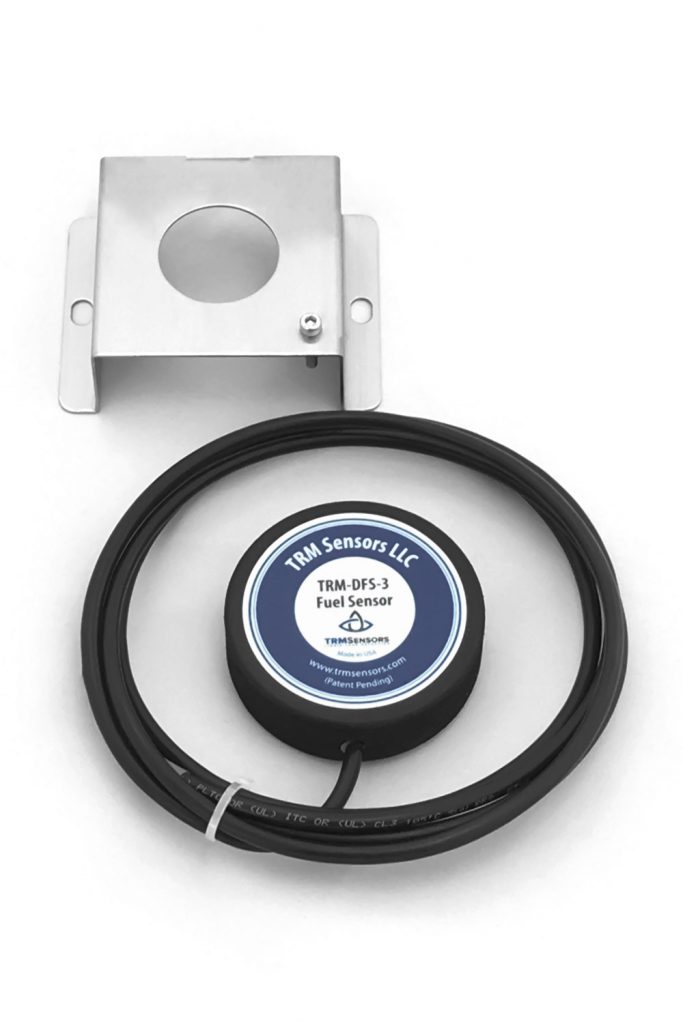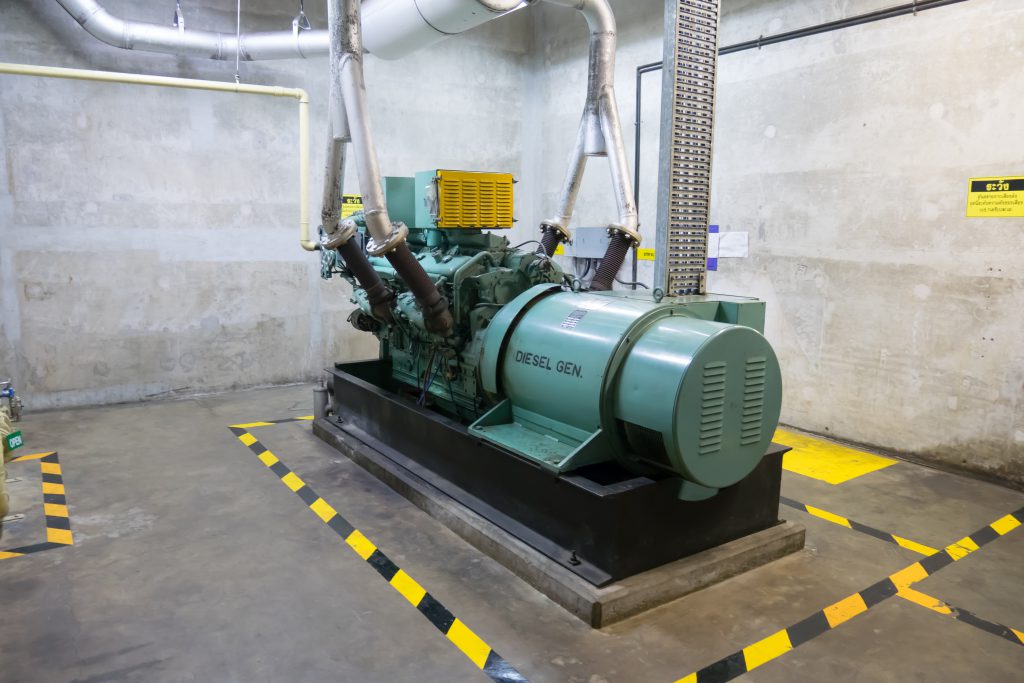TRM-DFS-3 Diesel Fuel Sensor
Simple, inexpensive and reliable monitoring for your diesel fuel system.
No moving parts. No active electronics.
Compatible with your existing monitoring system
Administrators and facility managers know that back-up power is required for modern medical facilities. Diesel powered emergency generators area the #1 choice for heavy load, mission critical requirements. But large diesel engines demand a supply of diesel fuel and storing diesel fuel within your facility brings its own set of risks.
Fire and Pollution
Fire gets the most attention. A fire in the mechanical room is a major problem in any scenario but a fire enhanced by diesel fuel leak can be a disaster. Factory Mutual and other insurers now recommend medical facilities monitor their diesel fuel systems for leaks.
The risk of fire is real, But it’s pollution that makes the headlines month after month.
Mechanical rooms have floor drains. Floor drains lead to storm water collection systems. Unfortunately, “Leak Detection by Neighbors” is all too common. The fuel sheen or oily smell in the small urban stream that is the first indication that something is amiss. While first responders deploy the containment measures, investigators work their way upstream to find the source. And when they find the source, there are usually local TV and press reporters right behind. Clean-up costs, fines and bad publicity are the result.

TRM-DFS-3 is entirely passive, it has now moving parts and operates at extremely low voltage. The sensor element is a conductive polymer material that changes from low resistance to high resistance when it is contacted by diesel fuel. The change is so dramatic that DFS-3 emulates a simple off/on switch as far as most building management systems are concerned.
TRM-DFS-3 emulates a closed contact that opens-on-alarm. That’s the same action that occurs with a open door sensor or similar off/on type devices. The resistance of the DFS-3 is less than 100 ohms when clean and dry. Moments after coming into contact with diesel fuel, the resistance climbs to over 5 meg-ohms.. Your building management system will interpret the clean state as a closed contact and the leak state as an open contact.
Drips from corroded tanks are probably the most frequent source of diesel spills. Depending on the size of the day tank, one or two DFS-3 sensors can be placed under the center line. If there is a low end, place the sensor there. Incorrectly tightened or cross-threaded fuel filters are another concern. Less common but still a concern are flex coupling hoses that connect the rigid fuel piping with the vibrating engine.. Other leak sources are pump pads and valve manifolds. In all cases place the sensor flat on the concrete floor or in a drip pan.
The body of the DFS-3 is a regulation NHL hockey puck. It is heavy for its size, has a low center of gravity and is stable when place on a flat surface. TRM-DFS-3 should be placed on the floor surface below the likely sources of leak described above. In some cases a drip pan may already exist. If not, it can be useful to fabricate a mini-containment using plastic channel and construction adhesive. The idea is to contain any any puddle in the immediate vicinity of the sensor. Most installations also use a stainless steel hold down fixture TRM-DFS-3-SSHD. The hold down assures that the sensor doesn’t get kicked out of position by foot traffic or by too much tension on the leader cable
Individual TRM-DFS-3 sensors can be connected to the dry contact inputs on most building management but only on a one-to-one basis. If you need to install more than one sensor (and don’t have a surplus of alarm inputs) , you can use TRM Relay Unit Type-CV. Up to 10 DFS-3 sensors can be daisy chained to a single TRM Relay Unit Type-CV. A leak detected by any of the sensors, will trigger dry relay contacts connected to a single input on your monitoring system.
TRM-DFS-3 ships with one sensor element installed and a spare sensor in its separate envelope. When a leak occurs, the first response is to go to the source of the leak and take corrective action. The next step is to exchange the ‘wet” sensor element for the spare. No tools are required and the exchange takes a few seconds.
That’s it. Your system is fully restored and ready for normal operations.
Take the wet element back to the maintenance shop and let the residual fuel evaporate over the next several days. The sensor resistance will fall as the diesel fuel evaporates and the element can be reused once it falls below the alarm threshold for your particular alarm system. Each trip/reset cycle leaves the sensor element a bit higher in resistance. At some point, your BMS system will consider the sensor to be “open” even when it has dried for several weeks. At that point it’s time to replace the sensor element with a fresh element which can be purchased separately.
The TRM-DFS-3 does not react to water and water does not damage the DFS-3. However, if the sensor is completely submerged (at the bottom of a wet sump for instance) any fuel floating on the surface of the standing water won’t be detected. If you need to monitor a sump (wet or dry) consider TRM-CC for the application.
Yes. TRM-DFS-3 can be installed in hazardous areas. But mechanical equipment rooms in commercial buildings are rarely classified as hazardous areas.
TRM Sensors are considered to be “simple apparatus” as defined by CSA/EN/IEC/UL60079-11 per CSA evaluation and as such can be installed in hazardous areas when connected to the monitoring equipment via an approved zener safety barrier. The approvals maintained by the safety barrier manufacturer apply to the full systems consisting of “simple apparatus” (e.g TRM-DFS-3, leader wire, connectors, etc.) as long as hazardous area wiring practices and the barrier limits are observed. Contact the factory for full details.
Individual TRM-DFS-3 sensors are $230 each. The recommended stainless steel hold down fixture is $35. Each sensor comes with a spare sensor elements and additional elements are $25 each. If you need only one sensor and have a nearby Monitoring System input card, the only extra costs will be for hook-up wire between the sensor (which comes with 6 feet of leader wire attached) and your input panel.
A TRM Relay Unit Type-CV with power supply and wall mount ABS enclosure is $550. Remote Alarm Units (a loud buzzer, and lighted silence switch for the security desk) cost $195.
Contact the factory with a description of your project for a complete system quote or just use the Online Store Button below to buy now
A more complete description of the TRM-DFS-3, TRM Relay Unit Type- CV with links to data sheets and installation instructions is available here.

If you manage one of these …
…you probably are responsible for several of these:

